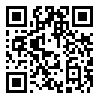Mon, Dec 15, 2025
[Archive]
Volume 19, Issue 5 (Suppl- 2021)
IJRM 2021, 19(5): 183-183 |
Back to browse issues page
Download citation:
BibTeX | RIS | EndNote | Medlars | ProCite | Reference Manager | RefWorks
Send citation to:



BibTeX | RIS | EndNote | Medlars | ProCite | Reference Manager | RefWorks
Send citation to:
Kakebaraei S, Jalili C. P-16 Antioxidant effects of royal jelly on lead induced sperm DNA damage and sperm abnormality in male mice. IJRM 2021; 19 (5) :183-183
URL: http://ijrm.ir/article-1-2923-en.html
URL: http://ijrm.ir/article-1-2923-en.html
1- Student Research Committee, Kermanshah University of Medical Sciences, Kermanshah, Iran. , seyranbaraie@yahoo.com
2- Department of Anatomy, School of Medicine, Kermanshah Medical University, Kermanshah, Iran.
2- Department of Anatomy, School of Medicine, Kermanshah Medical University, Kermanshah, Iran.
Abstract: (594 Views)
Background: Royal jelly, a secretion vintage of the salivary glands of worker bees, is an extremely impressive antioxidant and possesses eminent free radical scavenging trait. It has been shown to have anti-tumor, antibiotic, anti-inflammatory, immunomodulatory and as well as antioxidant properties. Royal jelly has remarkable positive effects on reproductive system and fertility. On the other hand, lead, which is widely used in industry, can be detected in foods, drinking water, ambient air, dust, and various cosmetics products. Its toxicity causes excess levels of reactive oxygen species (ROS) and cellular oxidative stress. More importantly, our knowledge of the effects of lead on sperm DNA integrity is significantly limited.
Objective: We investigated the effect of Royal jelly against reproductive toxicity caused by lead exposure in mice.
Materials and Methods: Male mice received lead acetate (50 mg/kg) and plus Royal jelly (25, 50 or 100 mg/kg) via oral gavage for 28 days. Adult male mice were divided into five groups (n = 5). Caudal epididymal sperm characteristics, lipid peroxidation and in vitro fertilizing capacity were evaluated after 4 weeks.
Results: Lead acetate-intoxicated mice exhibited testicular tissue injury and decreased serum levels of SOD, TAC, testosterone and increased serum level of MDA and nitric oxide. The count, viability, motility and normal morphology of the sperms were decreased in lead-induced group. Royal jelly prevented testicular injury, increased serum levels of SOD, TAC and improved the semen quality and decreased serum level of MDA and nitric oxide. However, Royal Jelly can reduce the regulation of Bax and Caspase-3 pro-inflammatory factors in lead-treated mice by reducing oxidative stress.
Conclusion: Our findings showed that Royal jelly with its antioxidant effects reduces inflammation and cell death in testis and sperm DNA structure following exposure to lead. However, further studies are needed to illuminate other mechanisms of Royal jelly's effect on testis function.
Objective: We investigated the effect of Royal jelly against reproductive toxicity caused by lead exposure in mice.
Materials and Methods: Male mice received lead acetate (50 mg/kg) and plus Royal jelly (25, 50 or 100 mg/kg) via oral gavage for 28 days. Adult male mice were divided into five groups (n = 5). Caudal epididymal sperm characteristics, lipid peroxidation and in vitro fertilizing capacity were evaluated after 4 weeks.
Results: Lead acetate-intoxicated mice exhibited testicular tissue injury and decreased serum levels of SOD, TAC, testosterone and increased serum level of MDA and nitric oxide. The count, viability, motility and normal morphology of the sperms were decreased in lead-induced group. Royal jelly prevented testicular injury, increased serum levels of SOD, TAC and improved the semen quality and decreased serum level of MDA and nitric oxide. However, Royal Jelly can reduce the regulation of Bax and Caspase-3 pro-inflammatory factors in lead-treated mice by reducing oxidative stress.
Conclusion: Our findings showed that Royal jelly with its antioxidant effects reduces inflammation and cell death in testis and sperm DNA structure following exposure to lead. However, further studies are needed to illuminate other mechanisms of Royal jelly's effect on testis function.
Type of Study: Congress Abstract |
Subject:
Reproductive Pattology
Send email to the article author
| Rights and permissions | |
 |
This work is licensed under a Creative Commons Attribution-NonCommercial 4.0 International License. |




